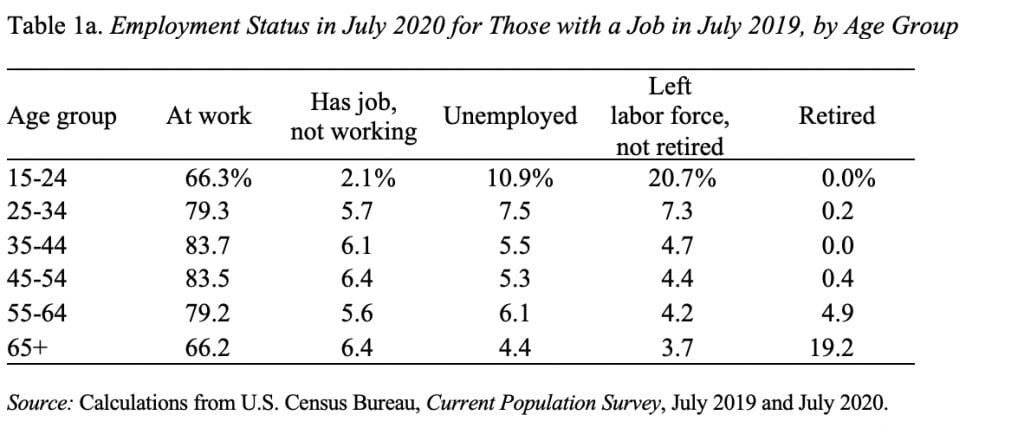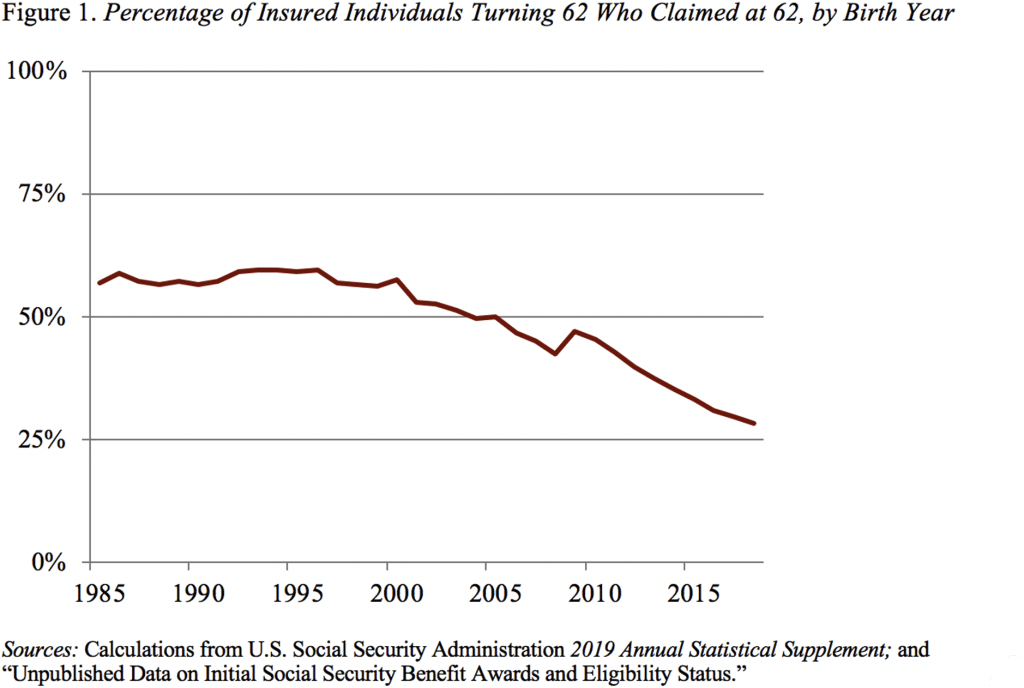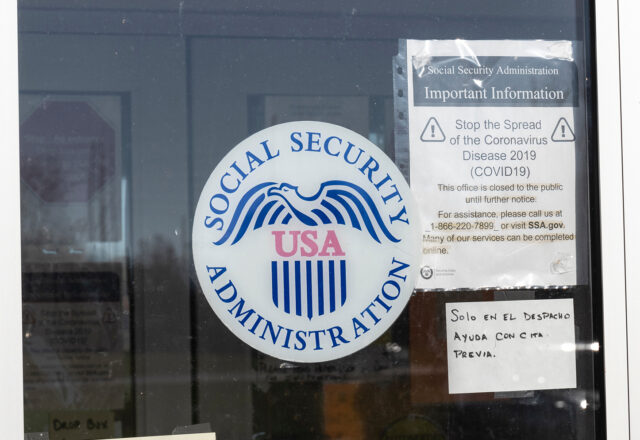
How Has COVID-19 Affected Older Workers?
Alicia H. Munnell is a columnist for MarketWatch and senior advisor of the Center for Retirement Research at Boston College.
Older workers hurt only slightly more than prime age.
Recessions hurt workers, so employment is down for people of all ages. The question is the relative experience of older individuals. Older workers have faced both an economy with high levels of unemployment and a virus that puts them more at risk than their younger counterparts. Has their experience in the labor force been especially bad?
Some very early data offer a peek at the experience of older workers relative to other age groups. The data come from the monthly Current Population Survey, which is used as the basis for the unemployment report. The survey’s rotating interview pattern makes it possible to link households across time. Specifically, households are interviewed for four consecutive months, then not interviewed for eight months, then interviewed again for another four consecutive months before exiting the survey. This pattern allows us to see the labor force transition for a subset of households between July 2019 and July 2020. As a basis of comparison, we also looked at the transitions of a different subset of households between July 2018 and July 2019.
The results are shown in Tables 1a and 1b. I know that these tables involve a whole lot of numbers, but they are absolutely the best way to get at what’s going on. Let’s start with those ages 65+. In July 2020, 66.2 percent of those who had been employed in July 2019 were still working and 19.2 percent had retired. The rest fell into one of the three other categories (Table 1a). In July 2019, 73.4 percent of those 65+ who had been working in July 2018 were still working and 17.2 percent had retired (see Table 1b). Thus, the percentage of previous workers still working had declined by 7.2 percentage points in July 2020 compared to July 2019.


For those ages 55-64, the comparable decline in the percentage previously employed who were still working was more modest – 4.6 percentage points (83.8 percent – 79.2 percent). This decline was consistent with that for prime age workers – ages 35-44 and 45-55. The group that got nailed was young workers.
That said, I would expect to see some increase in early claiming of Social Security benefits as occurred during the Great Recession. The percentage of 62-years-olds claiming Social Security had been trending downward, but then increased from 42.2 percent in 2008 to 46.9 percent in 2009 and then dropped back down to trend (see Figure 1). This pattern will likely repeat itself in the wake of COVID-19.








